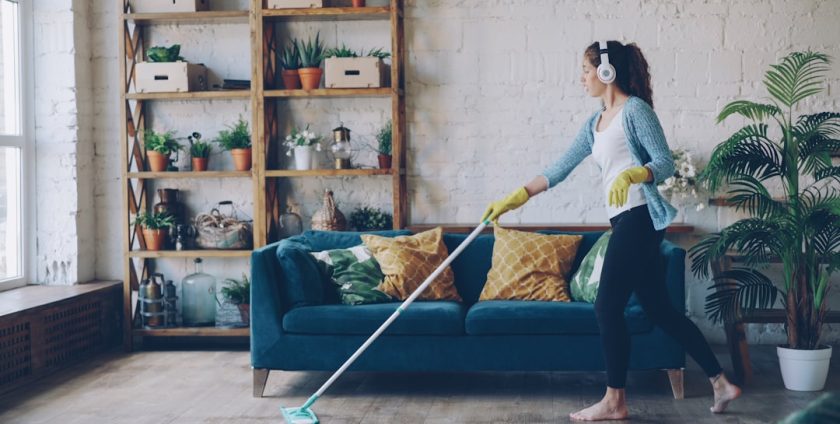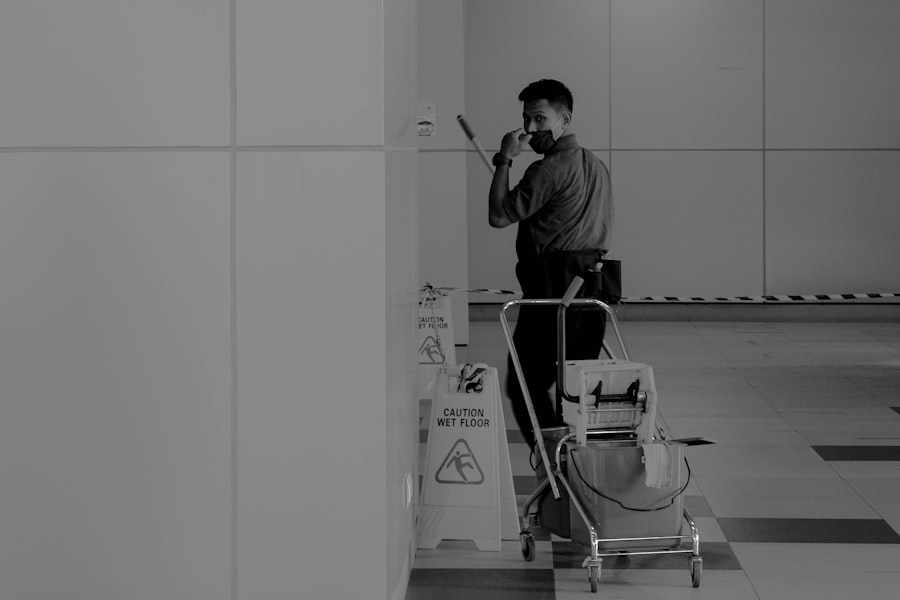
- By: admin
- Category: Commercial Floor Cleaning Machines
- 0 comment
In the realm of commercial and industrial cleaning, understanding the various flooring options is crucial for effective maintenance. Tile, epoxy, and polished concrete floors each possess unique properties that influence their cleaning requirements and longevity. Tile floors, often made from ceramic or porcelain, are renowned for their durability and resistance to moisture.
They are commonly found in high-traffic areas such as shopping centres and hospitals, where hygiene is paramount. The surface of tile can be textured or smooth, which affects how dirt and grime accumulate. On the other hand, epoxy floors are a popular choice in warehouses and manufacturing facilities due to their seamless finish and chemical resistance.
Composed of a resin and hardener, epoxy creates a robust surface that can withstand heavy loads and spills. This type of flooring is particularly advantageous in environments where safety is a concern, as it can be formulated to be slip-resistant. Polished concrete floors, meanwhile, are increasingly favoured for their aesthetic appeal and low maintenance needs.
The polishing process enhances the concrete’s natural beauty while providing a hard-wearing surface that can resist stains and scratches. Understanding these properties is essential for facility managers and contract cleaners to implement appropriate cleaning strategies. Please feel free to get in touch with us through our Contact Us page.
Summary
- Tile, epoxy, and polished concrete floors have different properties and require specific cleaning and maintenance methods.
- Dos for cleaning tile floors include regular sweeping and mopping with a neutral pH cleaner, while don’ts include using harsh chemicals and abrasive tools.
- To maintain the shine of epoxy floors, it’s important to regularly clean with a non-abrasive cleaner and avoid using vinegar or citrus-based cleaners.
- Proper cleaning of polished concrete floors is essential to prevent dirt and grime from wearing down the surface and compromising its shine.
- Common mistakes to avoid when cleaning tile, epoxy, and polished concrete floors include using improper cleaning tools and neglecting regular maintenance.
The Best Cleaning Methods for Tile Floors: Dos and Don’ts
When it comes to tile floors, employing the right cleaning methods can significantly enhance their appearance and longevity. One of the primary dos is to use a pH-neutral cleaner specifically designed for tile surfaces. These cleaners effectively remove dirt without damaging the grout or the tile itself.
Regular sweeping or vacuuming is also essential to prevent dirt from scratching the surface during mopping. For stubborn stains, a gentle scrub with a soft-bristle brush can work wonders without compromising the integrity of the tile. Conversely, there are several don’ts that should be strictly adhered to when cleaning tile floors.
Avoid using abrasive cleaners or scouring pads, as these can scratch the surface and dull its finish over time. Additionally, steer clear of acidic cleaners, which can erode grout and lead to discolouration. It’s also important not to let water sit on tile floors for extended periods, as this can seep into the grout lines and cause mould growth.
By following these dos and don’ts, facility managers can ensure that tile floors remain in pristine condition.
Maintaining the Shine of Epoxy Floors: Tips and Tricks

Epoxy floors are celebrated for their glossy finish, but maintaining that shine requires consistent care and attention. One effective tip is to implement a regular cleaning schedule that includes sweeping or dust mopping to remove debris that could scratch the surface. For deeper cleaning, using a damp mop with a mild detergent can help lift dirt without dulling the shine.
It’s advisable to avoid excessive water during cleaning, as standing water can compromise the bond between the epoxy and the substrate. Another trick to maintain the lustre of epoxy floors is to apply a floor finish specifically designed for epoxy surfaces. This not only enhances the shine but also provides an additional layer of protection against scratches and stains.
Additionally, placing mats at entry points can significantly reduce the amount of dirt tracked onto the floor, preserving its appearance for longer periods. By implementing these strategies, contract cleaners can ensure that epoxy floors remain visually appealing while extending their lifespan.
The Importance of Proper Cleaning for Polished Concrete Floors
Polished concrete floors are not only aesthetically pleasing but also highly functional in commercial settings. However, proper cleaning is vital to maintain their appearance and performance. Regular maintenance helps prevent dust accumulation and staining, which can detract from the floor’s shine.
Using a soft broom or vacuum designed for hard surfaces is essential to remove loose debris without scratching the polished finish. Moreover, employing a damp mop with a pH-neutral cleaner can effectively lift dirt without leaving residue that could dull the surface over time. It’s crucial to avoid harsh chemicals or acidic cleaners that could etch the concrete and diminish its polished look.
In high-traffic areas, more frequent cleaning may be necessary to keep the floor looking its best. By prioritising proper cleaning techniques, facility managers can ensure that polished concrete floors remain an attractive feature of their premises.
Common Mistakes to Avoid When Cleaning Tile, Epoxy, and Polished Concrete Floors
In the pursuit of maintaining pristine flooring, several common mistakes can undermine efforts in cleaning tile, epoxy, and polished concrete surfaces. One prevalent error is neglecting to test cleaning products on a small area before full application. This precaution is particularly important for epoxy and polished concrete floors, where certain chemicals may cause discolouration or damage.
Additionally, failing to follow manufacturer guidelines regarding cleaning frequency can lead to premature wear. Another mistake often made is using too much water during the cleaning process. Excessive moisture can seep into grout lines in tile floors or create a slippery surface on epoxy floors, posing safety hazards.
Furthermore, using inappropriate tools—such as steel wool or abrasive pads—can scratch surfaces and diminish their aesthetic appeal. By being aware of these common pitfalls, contract cleaners can adopt more effective cleaning practices that protect flooring investments.
Choosing the Right Cleaning Products for Each Type of Flooring

Selecting appropriate cleaning products is paramount in maintaining tile, epoxy, and polished concrete floors effectively. For tile surfaces, pH-neutral cleaners are ideal as they clean without damaging grout or tiles. It’s also beneficial to use products specifically formulated for ceramic or porcelain tiles to enhance their shine while ensuring thorough cleaning.
When it comes to epoxy floors, choosing a cleaner that is compatible with resin-based surfaces is essential. Many manufacturers offer specialised products designed to maintain the integrity of epoxy finishes while providing effective cleaning capabilities. For polished concrete floors, look for products that are free from harsh chemicals and designed specifically for concrete surfaces; these will help maintain the floor’s shine without causing damage.
The debate between professional cleaning services and DIY maintenance is one that many facility managers grapple with when it comes to flooring care. While DIY methods may seem cost-effective initially, they often lack the expertise required for optimal results. Professional cleaners possess specialised knowledge about different flooring types and access to advanced equipment that can achieve superior results compared to standard cleaning tools.
Moreover, professional services often include tailored maintenance plans that consider specific environmental factors affecting flooring longevity. For instance, in industrial settings where spills are common, professionals can implement strategies that mitigate damage while ensuring compliance with health and safety regulations. Ultimately, investing in professional cleaning services can save time and money in the long run by prolonging the life of flooring investments.
Tips for Preventing Damage and Extending the Lifespan of Tile, Epoxy, and Polished Concrete Floors
Preventative measures play a crucial role in extending the lifespan of tile, epoxy, and polished concrete floors in commercial settings. One effective strategy is to implement a regular maintenance schedule that includes routine inspections for signs of wear or damage. Early detection allows for timely repairs that can prevent more extensive issues down the line.
Additionally, using protective mats in high-traffic areas can significantly reduce wear on flooring surfaces by trapping dirt and moisture before they reach the floor itself. Encouraging employees to adhere to proper footwear policies can also minimise scuffing and scratching on these surfaces. By prioritising preventative measures alongside effective cleaning practices, facility managers can ensure that their flooring remains in excellent condition for years to come.
In conclusion, understanding the unique properties of tile, epoxy, and polished concrete floors is essential for effective maintenance in commercial environments. By employing appropriate cleaning methods tailored to each type of flooring and avoiding common mistakes, facility managers can significantly enhance both appearance and longevity. Whether opting for professional services or implementing DIY strategies, prioritising proper care will ultimately protect flooring investments.
**FAQ Section** 1. **What type of cleaner should I use on tile floors?**
Use a pH-neutral cleaner specifically designed for tile surfaces to avoid damaging grout or tiles. 2.
**How often should I clean epoxy floors?**
Regular sweeping or dust mopping should be done daily; deeper cleaning with a damp mop should occur weekly or as needed based on traffic levels. 3. **Can I use vinegar on polished concrete floors?**
No, vinegar is acidic and can etch polished concrete surfaces; opt for pH-neutral cleaners instead.
4. **What are some signs that my flooring needs professional cleaning?**
Signs include visible stains that do not come out with regular cleaning, dullness in shine, or accumulation of dirt in grout lines. 5.
**How can I prevent scratches on my epoxy floor?**
Use mats at entry points to trap dirt and debris before it reaches your floor; also encourage proper footwear policies among employees.
FAQs
What are the different methods for cleaning tile floors?
There are several methods for cleaning tile floors, including sweeping or vacuuming to remove loose dirt and debris, mopping with a mild detergent and warm water, and using a grout brush to clean the grout lines. For tougher stains, a mixture of baking soda and water or a commercial tile cleaner can be used.
How should epoxy floors be cleaned?
Epoxy floors can be cleaned by sweeping or vacuuming to remove loose dirt and debris, mopping with a mild detergent and warm water, and using a soft-bristled brush for stubborn stains. It is important to avoid using abrasive cleaners or scrubbing pads that can damage the epoxy surface.
What is the best way to clean polished concrete floors?
To clean polished concrete floors, start by sweeping or vacuuming to remove loose dirt and debris. Then, mop the floor with a neutral pH cleaner and warm water, using a microfiber mop to avoid leaving streaks. Avoid using acidic or abrasive cleaners that can damage the polished surface.
Are there any general tips for cleaning all types of floors?
Some general tips for cleaning all types of floors include using doormats to trap dirt and prevent it from being tracked onto the floor, wiping up spills promptly to prevent staining, and using furniture pads to protect the floor from scratches. It is also important to follow the manufacturer’s recommendations for cleaning and maintenance to preserve the floor’s appearance and longevity.
